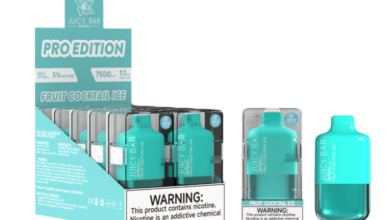The Role of Delivery Trucks in Last Mile Logistics

The last mile is a complex logistics stage that impacts customer satisfaction and brand loyalty. It consists of multiple stops with low pickup and delivery capacities, route inefficiencies that require costly fuel consumption or idling, and high customer service expectations.
For leaders, it raises many priority questions that point to a variety of solutions. Here are some of them:
Capacity
The last mile is the final leg of a product’s journey from factory to consumer. This includes delivery from regional distribution hubs to retailers, business customers, and households. E-commerce has fueled a tidal wave of demand for faster deliveries, pushing companies to explore new technologies and experimental supply chain models.
But while it’s easy to justify the cost of operating a truck for outbound shipments when you’re spreading overhead across a thousand packages, that doesn’t scale to last mile. Drivers and vehicles must travel much farther and more often in last mile logistics, and it adds up quickly.
This is especially true in urban areas where streets are narrow, traffic is congested, and parking can be limited. In these cases, routes must be reworked to accommodate out-of-route miles, which can account for up to 10 percent of total fleet mileage. This eats into the bottom lines of shippers and carriers alike. The solution is to leverage technology and a network of trusted partners for last mile delivery services.
Congestion
The COVID-19 pandemic has prompted consumers to embrace same-day delivery and other high-speed options that have created more work for last mile carriers. As a result, trucks may be stuck in traffic for long periods of time and make multiple stops per delivery, leading to inefficiencies.
Customers also have specific delivery windows that can be difficult to meet, and failure to do so results in missed deliveries and lost customer satisfaction. Additionally, the cost of fuel is increasing and fleet managers must manage driver schedules to ensure that they can keep up with demand.
Technology can help reduce inefficiencies in the final leg of a delivery. Using route optimization software, companies can map the most efficient routes for their vehicles, cutting costs and making it easier to fulfill delivery requests. Another option is to use shared vehicles, which can reduce congestion and carbon emissions. Alternatively, companies can invest in pop-up warehouses or retail stores to minimize transportation costs and make it easier for customers to pick up their packages.
Visibility
The last mile is the end leg of the delivery process, and it’s important to keep customers informed as their package makes its way to them. For many businesses, this means providing visibility into real-time shipping status.
Visibility is an essential component of ecommerce fulfillment and distribution, and it can be affected by many factors. These factors include weather, traffic congestion, and road conditions. If your routes don’t account for these issues, drivers will have to adjust their schedules on their own and rack up extra mileage that doesn’t contribute to a customer’s experience.
One company that knows the importance of effective last-mile logistics is Eldum rett, a meal kit delivery service in Iceland. Their old manual transportation dispatching process was not scalable as the business started growing to 1,000 weekly orders. Fortunately, they turned to OptimoRoute and now enjoy increased efficiency and greater visibility into their delivery fleet. This is vital to keeping their customers happy and satisfied.
Technology
Whether it’s a quick pickup of dinner ingredients or the latest must-have home improvement product, delivery trucks travel millions of miles every day. They need to be nimble to respond to rapid customer demand and meet sustainability targets. They need to be able to optimize routes to minimize costs. And they need to provide clear visibility for customers as they await deliveries.
Consumers today are demanding better last mile logistics that lead to fast and flawless delivery. That means businesses that can’t keep up risk losing brand loyalty and sales revenues.
A growing number of companies are adopting specialized software to manage their delivery operations and improve efficiency. This includes companies offering pop-up warehouses for local product fulfillment, as well as LTL and truckload carriers like XPO Logistics and Schneider. These solutions can help drivers save time and fuel by eliminating unnecessary stops and reroutes. They can also help managers better track and analyze driver productivity.





